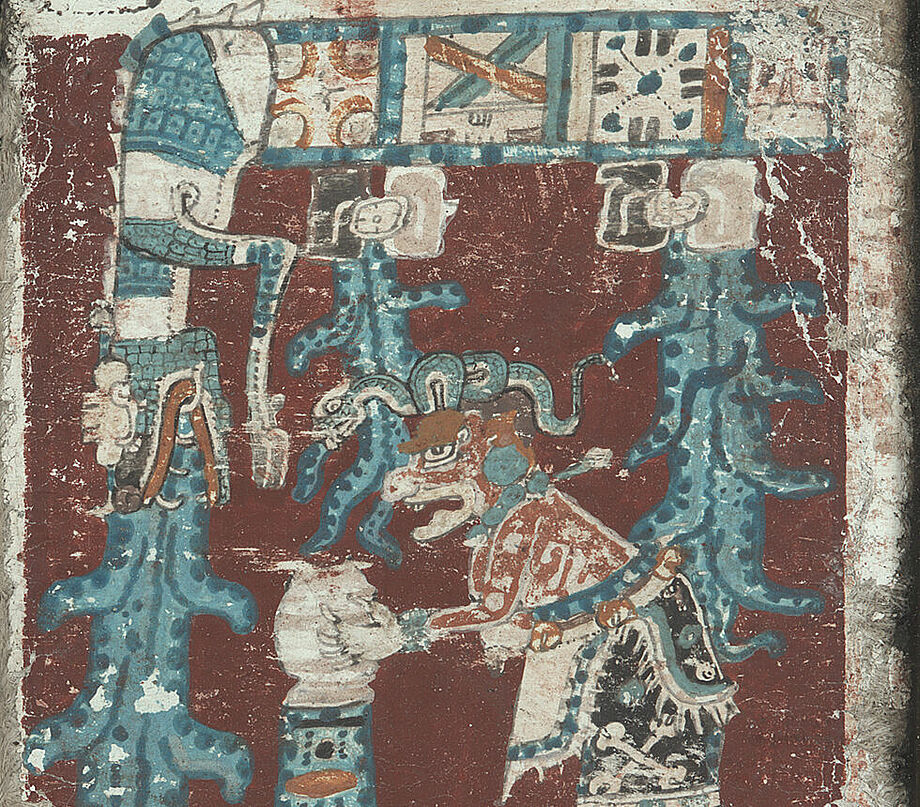The Maya Codex in the SLUB Dresden
- is the highest quality and the most content-rich codex of the 4 Maya manuscripts preserved worldwide
- originated in the later post-classical period of Maya culture (ca. 1300-1521) on the Yucatán peninsula
- consists of 39 sheets of bark bast originally screenfolded, which are exhibited in 2 strips with a total length of 3.56 m between glass panes in the Treasury of the SLUB Book Museum
- contains ritual and divination calendars, astronomical and meteorological tables, ritual instructions and numerous depictions of gods
- is a key document for the deciphering of the Mayan hieroglyphs and for the study of astronomy and time calculation of the Maya
- was acquired in 1739 by the librarian Johann Christian Götze in Vienna and was recognized as a Mayan manuscript in the 19th century
- has been facsimiled several times and is the subject of countless publications
Aware that the Maya Codex in the SLUB Dresden is a cultural asset from a colonial context, the SLUB is endeavouring to research the provenance of the object as far as possible and to ensure comprehensive access to the object - both analogue and digital.
- Codex Dresdensis in the Digital Collections of the SLUB
- Codex Dresdensis in the Mediateca of the Instituto Nacional de Antropología e Historia de México
